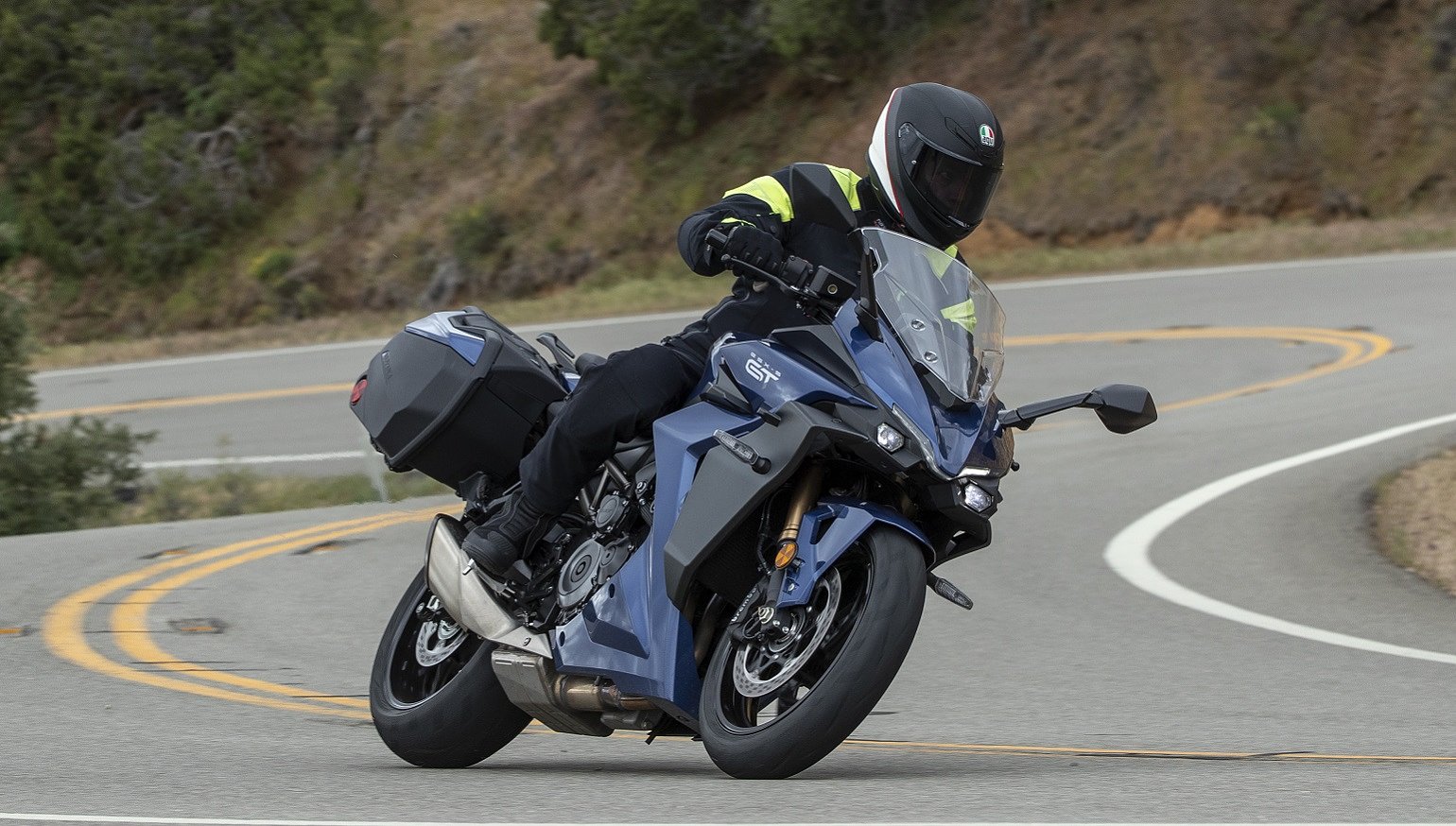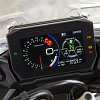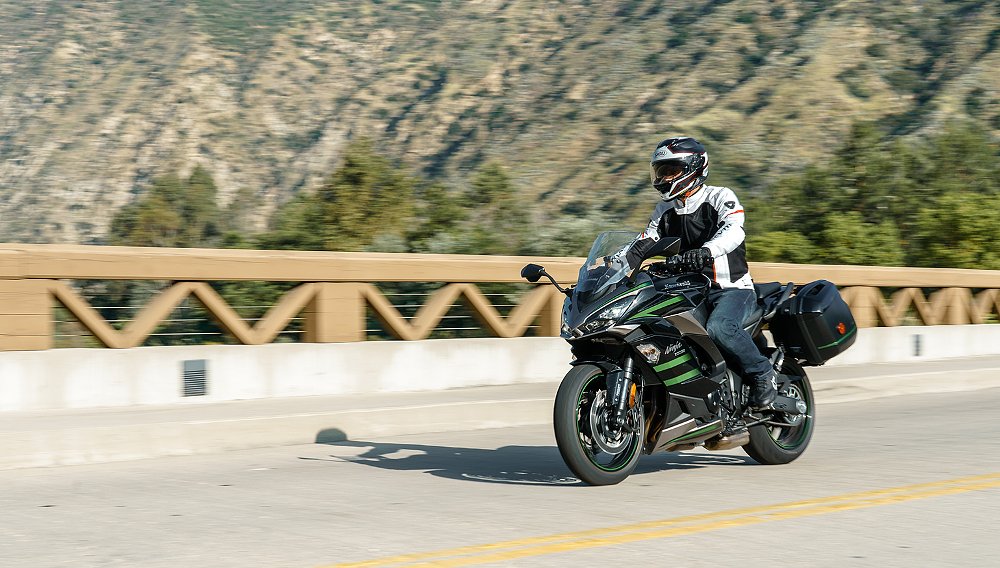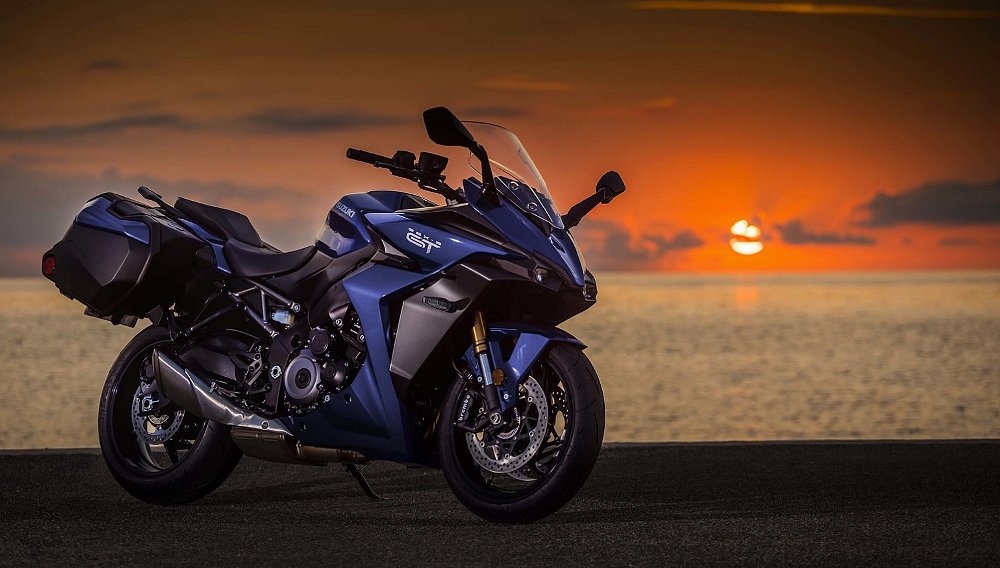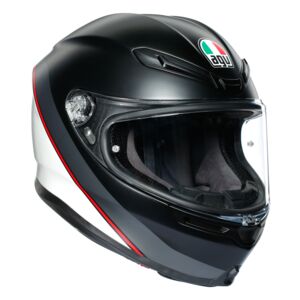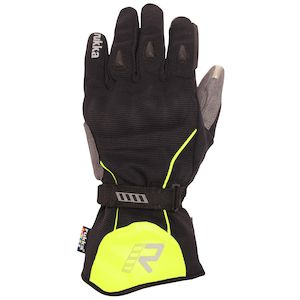"You're going to have to take this one," Spurgeon told me when the invitation to the Suzuki GSX-S1000GT+ press launch came in. "You're our sport-touring guy."
"How so?" I asked.
"You're the only one of us who owns a bike with color-matched saddlebags," Spurgeon explained.
That seemed like perilously thin qualifications to me, especially after Ari and Zack just got done testing three varied sport-touring motorcycles for top speed, quarter-mile acceleration and roadracing lap times. But it was a good assignment, so I didn't argue his questionable logic.
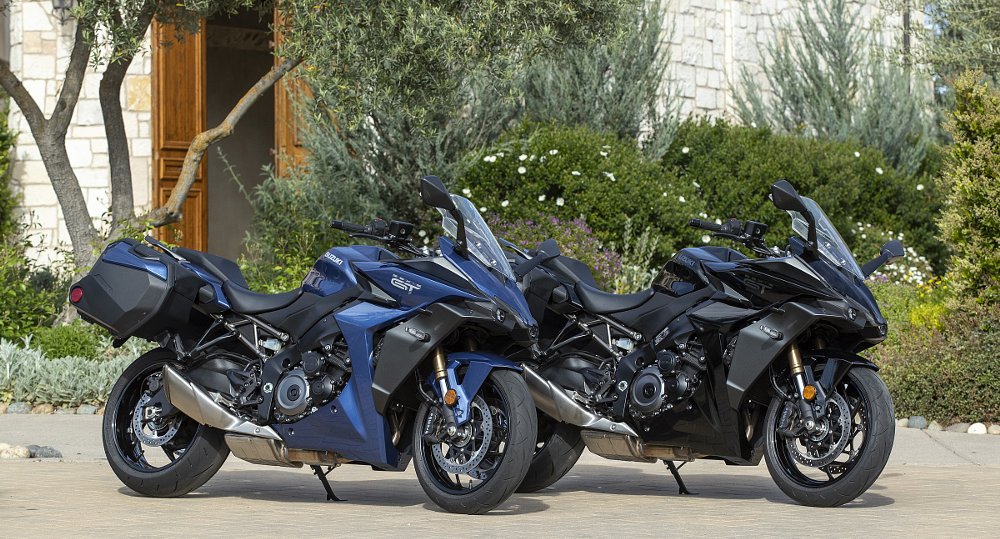
And, in fact, I am a huge fan of motorcycles like this GSX-S1000GT+. I can't keep up with Spurgeon on the trails or keep Ari or Zack in sight on the track, but give me a performance bike that's still comfortable and a long road ahead with enough curves to make it interesting, new horizons to be explored and scenery to be admired, and I'm your pilot. So that's why I made the six-hour flight from Boston to Los Angeles for two days of riding some great California roads (and a few not-so-great ones) on the first new traditional sport-touring model we've seen in years.
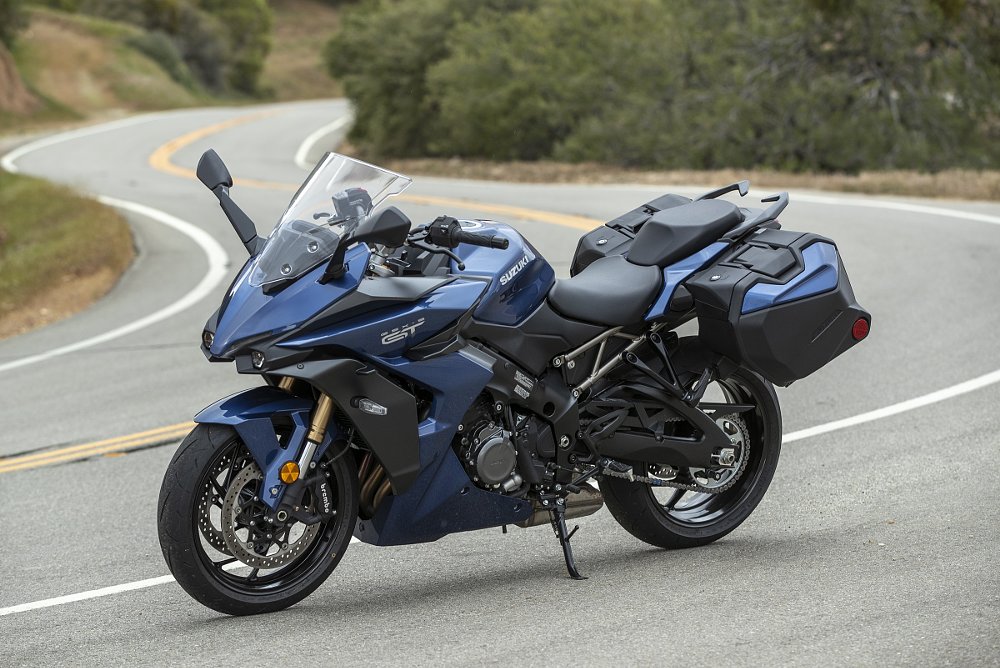
The Suzuki GSX-S1000GT+ hits the heart of the sport-touring spectrum
I say "traditional sport-touring model" because that category has evolved in recent years (a topic we somehow managed to talk about for more than an hour on a Highside/Lowside podcast last year). Adventure-touring motorcycles (think the ever-popular BMW GS boxers) or street bikes with an ADV stance and style (think Kawasaki Versys 1000 SE LT+ or Yamaha Tracer 9 GT) get all the attention these days. But the Suzuki follows the old recipe of mixing equal parts sport-bike performance and touring-bike comfort, luggage and wind protection to create a do-it-all, competent, road-going machine. For me, it's the tastiest recipe in motorcycling.
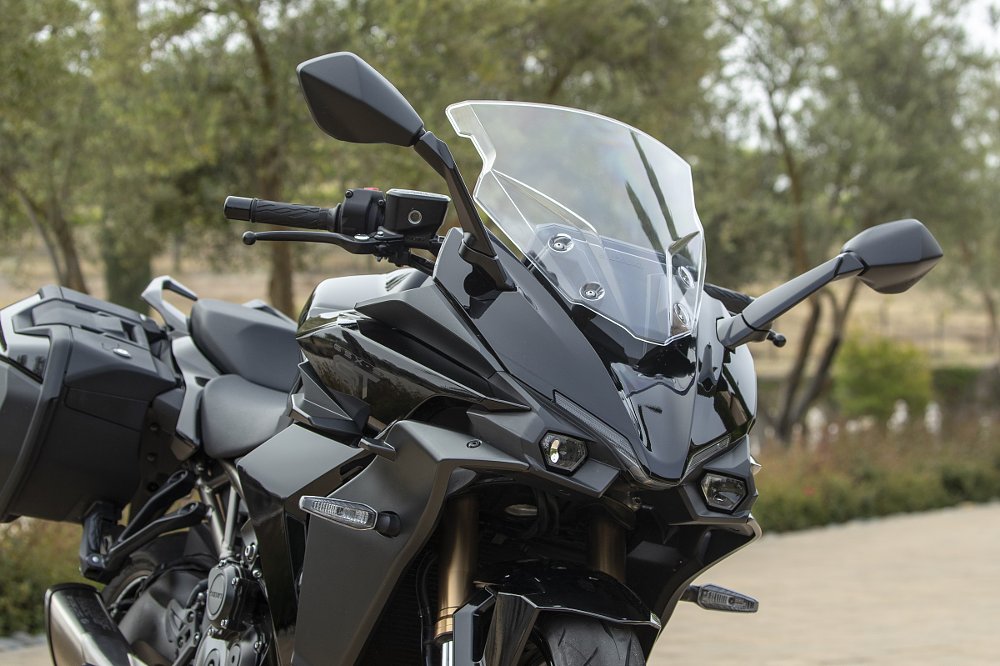
To be honest, Suzuki's lineup in the United States has been mostly static with few truly new models coming out in recent years. But the approach of revising existing hardware to create something that fills a new niche can still result in attractive motorcycles, and often at an enticing price.
The GSX-S1000GT+'s 999 cc inline-four engine, for example, dates to the 2005 GSX-R1000 sport bike. Suzuki calls it the "long-stroke engine" because it has a 59.0 mm stroke compared to the 55.1 mm stroke of the 999.8 cc engine in the current GSX-R1000R sport bike. And while that shorter stroke of the newer liter-class engine makes sense if you're an expert-level racer who lives at redline in search of slicing fractions of sections off lap times at the track, on the street the older engine is easier to live with. So Suzuki keeps revising it and finding new purposes for it.
"The GSX long-stroke engine is sort of the small-block Chevy of Suzuki," said Communications Manager Richard Kimes. "You can take it in a lot of different directions."
In the GSX-1000GT and GT+, Suzuki took it in a classic sport-touring direction. No ADV styling or off-road pretense whatsoever, just a powerful motorcycle that mixes sport performance and long-range ability, with a bias toward the sport end of the spectrum. Suzuki did a lot more than just slap a fairing on the GSX-S1000 naked bike Jen reviewed recently. Like the naked 1000, the GT's engine gets many new parts and is retuned to meet Euro 5 emissions standards. In the process it added two peak horsepower, but more importantly, the torque curve was smoothed out.
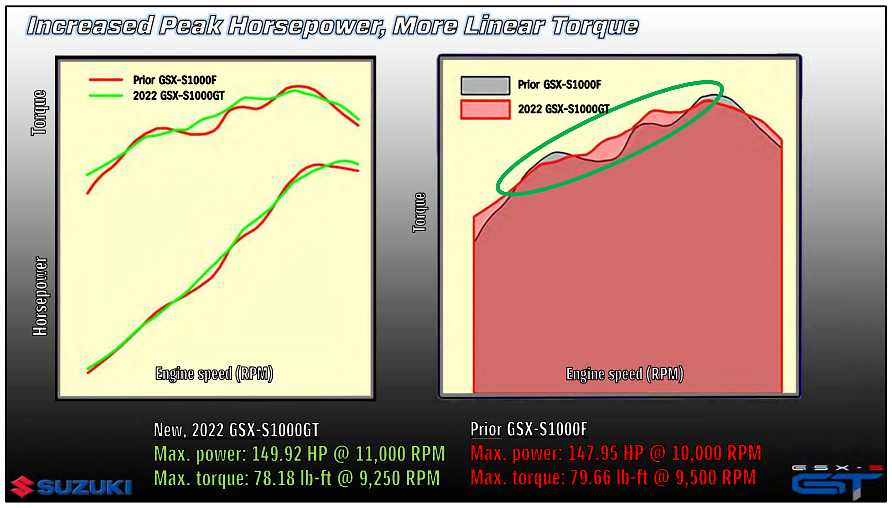
But there's a lot more to the GT beyond the engine.
Starting at the front, the full fairing features two LED headlights that are particularly compact and a position light above them. Suzuki execs said the way the lights are focused allow them to illuminate the road brightly despite being uncommonly small (a claim I didn't get a chance to test since we only rode during daylight). The look is pointy-faced and beady-eyed, and everyone has their own ideas of aesthetic attractiveness, so I'll let you decide if you like the look.
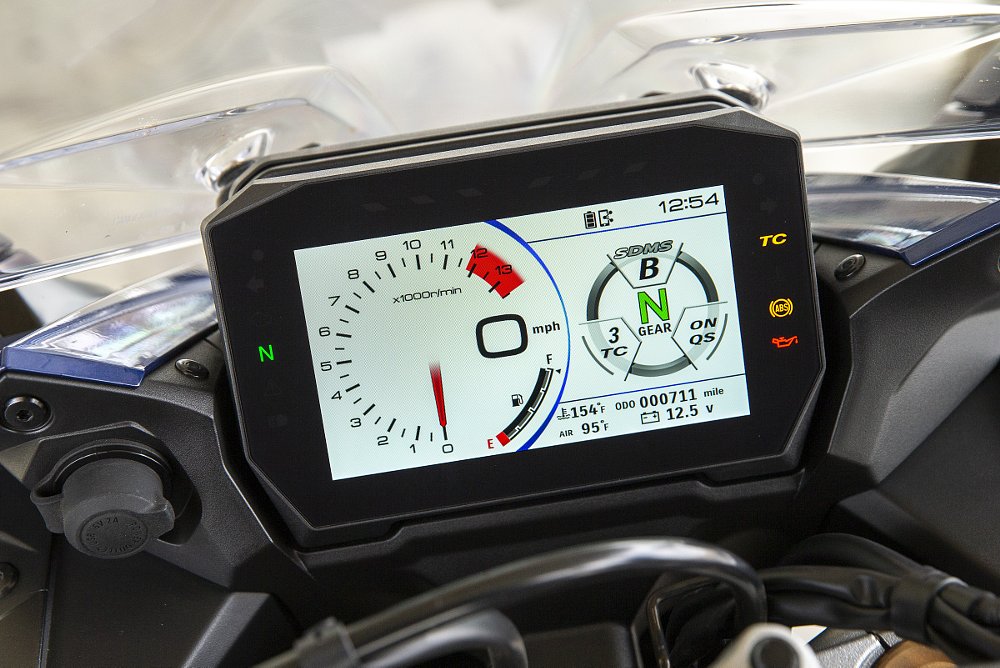
Tucked behind that fairing is a new 6.5-inch TFT display. On the left side it features a round dial tachometer, digital speed readout and a fuel gauge. On the right are indicators for the settings for ride modes, traction control and the quickshifter. Below that are smaller displays the rider can toggle through using the buttons on the left handgrip: odometer, trip meters, air and engine temperatures, charging status, current fuel mileage consumption, a countdown fuel range to supplement the gauge, and more. A photo sensor switches the display to black numerals on a white background in daytime and white numerals on black at night or the rider can override and choose either.
Suzuki offers three ride modes on the GSX-S1000GT and five levels of traction control, which can also be turned off. The two settings are independent, so changing ride modes does not change the level of the intervention of traction control. You can change settings on the fly, but only with the throttle closed. More on how it works, later. For now, suffice to say that I am not always the fastest learner when it comes to the task of clicking through menus on a motorcycle I'm riding for the first time in order to set all the rider aids that are supposed to save me from myself. On the GSX-S1000GT, I quickly got the hang of it.
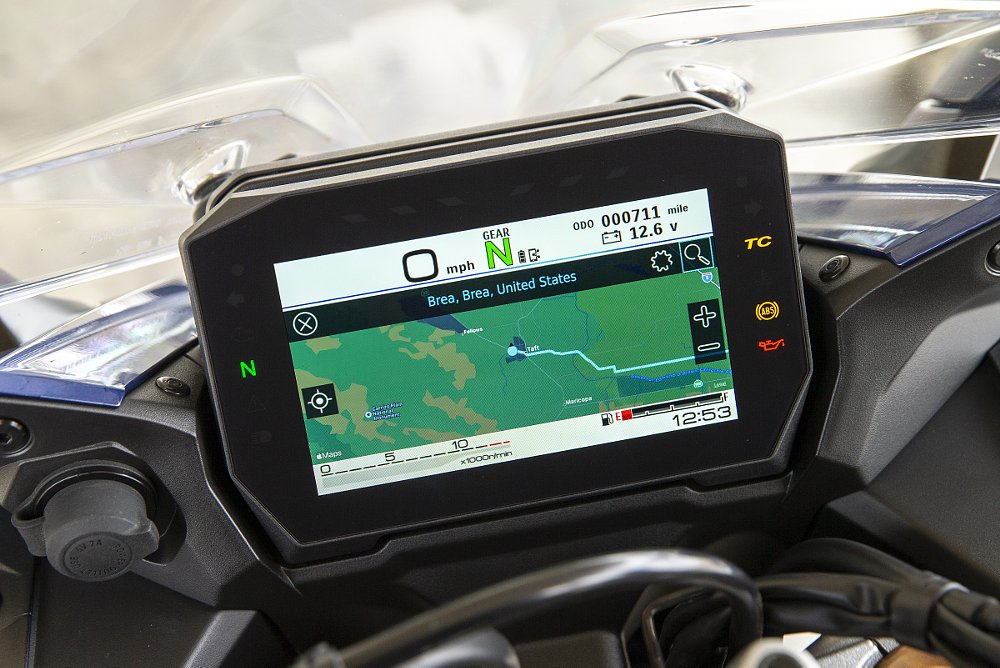
There's a wide, surprisingly high (given the sportiness of the bike) handlebar behind that display. Still moving front to back, the next change is an additional half a gallon of fuel capacity, now 5.0 gallons. With estimated mileage in the mid-30s, that still leaves the GSX-S1000GT short of the 200-mile range some sport-touring fans demand.
Behind the tank, the seat is 31.9 inches off the ground and the passenger seat is perched higher, to give the passenger a better view over the rider's shoulder, the Suzuki guys said, though the size of the passenger seating area is not what I'd call generous. Suzuki's leaning to the sport side of the sport-touring spectrum in many ways with this motorcycle, and some things were done to keep the look sporty.
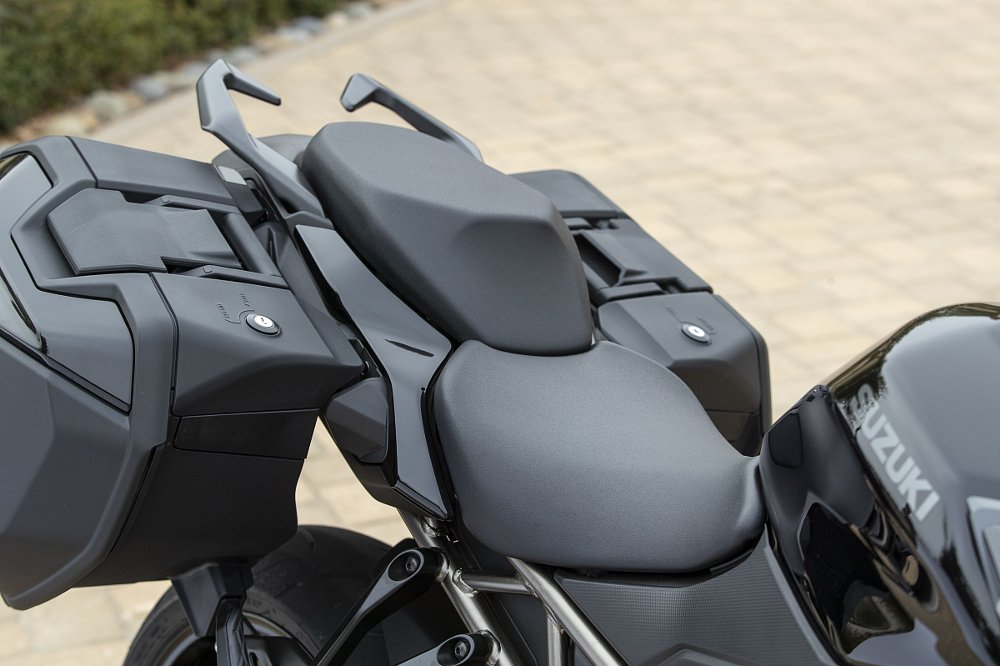
One of the changes Suzuki made to get the engine to pass emissions is add a second catalytic converter. It's tucked underneath the engine, which gives the twin benefits of keeping the weight low and keeping the muffler small, unlike some of the bazookas Suzuki was criticized for in the past. The downside is that there's no centerstand and no room to add one, even as an option.
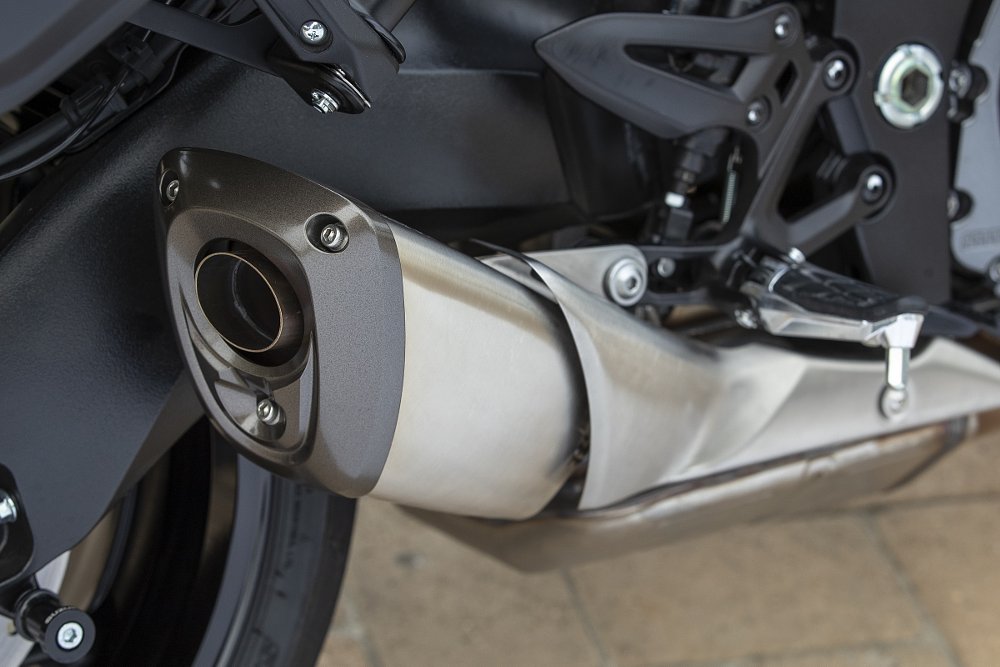
The most obvious new feature for sport-touring duty is the pair of 25.7-liter locking side cases in the back. The only two differences between the GSX-S1000GT and GSX-S1000GT+ are the saddlebags and the price: $13,149 and $13,799. At $650, the color-matched panniers are a real bargain, less expensive than similar aftermarket luggage and when you remove them the integrated mounts are not noticeable. If you buy the GT and later decide you want the side cases, you can add them as accessories and key them to match your ignition, but it will cost you more that way.
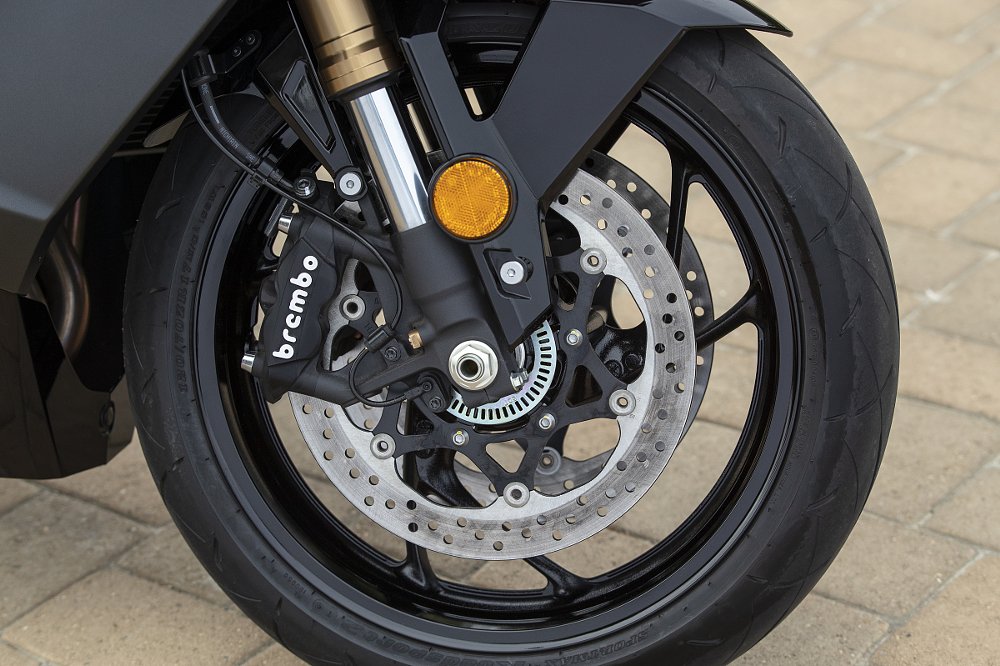
With Brembo brake calipers and a fully adjustable inverted KYB fork up front, and an adjustable KYB shock in the rear, the GT carries some sporty parts. Nothing left to do then but see how they work.
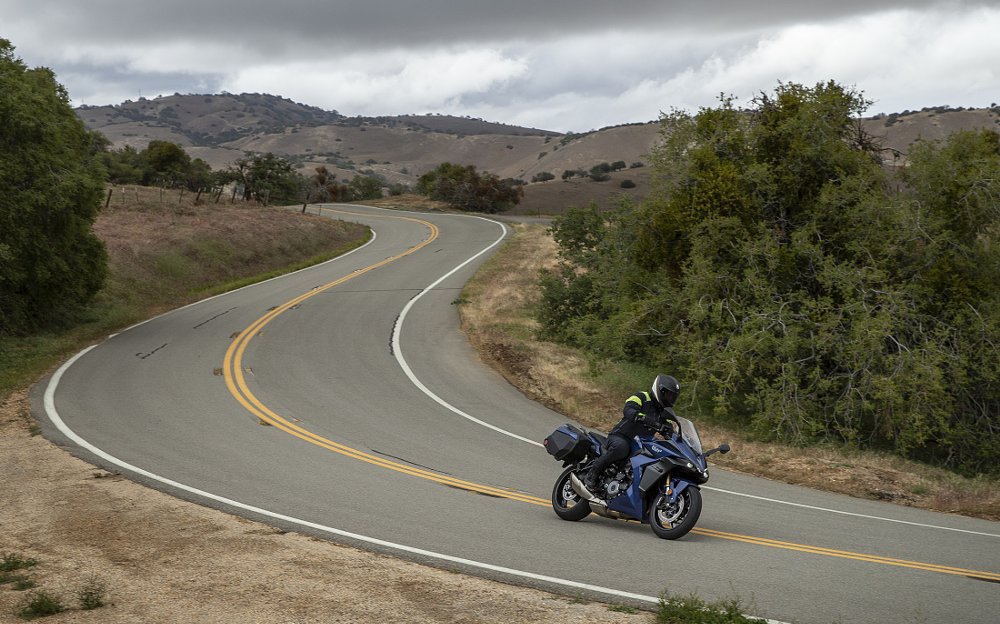
Riding the Suzuki GSX-S1000GT+
While some manufacturer new model press launches keep getting shorter, Suzuki realized that a sport-tourer needs to be tested in a variety of uses, so they put together a two-day ride of almost 600 miles that included heavy Southern California freeway traffic, some of the best curvy roads outside of Ojai, and roller coaster rural roads with semis for practice in identifying passing opportunities. Just to make the experience complete, they also included 30 miles of cold rain at the end of the day when we were getting tired and one homicidal truck. (OK, maybe they didn't actually plan those two parts, but those elements did make the sport-touring experience true-to-life.)
Nothing like hopping straight onto a strange-to-you 150-horsepower motorcycle with wide mirrors and side cases and lane-splitting through miles of Los Angeles-area traffic, right? Fortunately, right from the start, the GT shows its sport heritage with nimble handling, helped no doubt by the relatively light weight (just over 500 pounds with the side cases), the lack of a top-heavy feeling some ADV-styled sport-tourers have, and the wide, tapered aluminum handlebar, which provides plenty of leverage. Once I realized the widely spaced mirrors were as wide as the tucked-in side cases, I had the confidence to spurt through openings as we passed approximately 1,423,772.5 cars on the way out of the city sprawl.
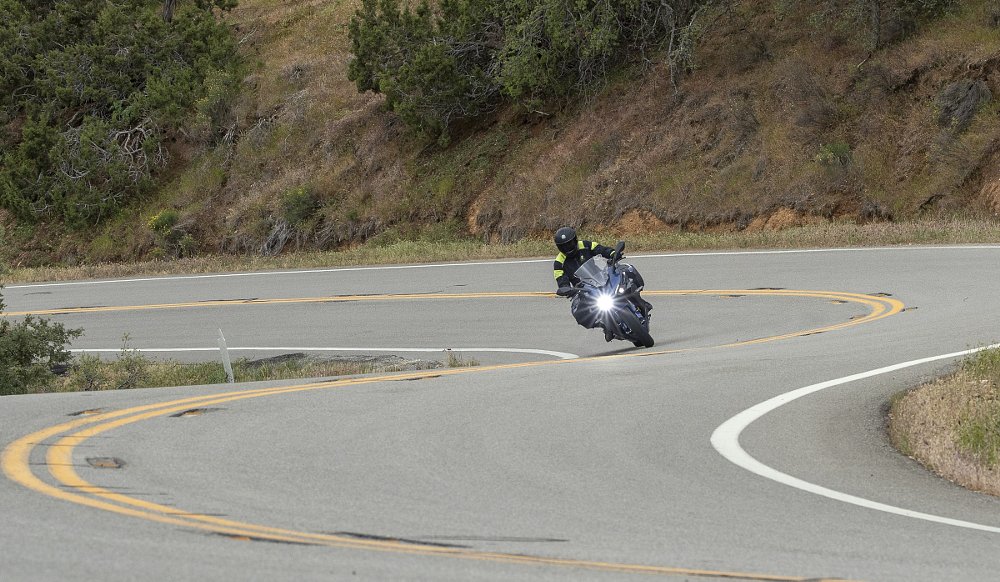
That engine helps, too. That chart of the torque curve did not lie. Even if you're just puttering along at 3,000 rpm, just twist the ride-by-wire throttle and feel yourself swept forward by a giant tailwind. There's no low-speed jerkiness, no dips or valleys in the power delivery. Just forward motion at your behest. Once (mostly) clear of traffic, I noted that 6,000 rpm (just under 50 percent of redline) in sixth gear yielded an indicated 85 mph.
Later, when we were on rural two-lanes and looking for scarce opportunities to pass semis, I found that I could just whack the throttle in sixth for passing maneuvers. Sure, shifting down two gears would have been a better approach, and I made myself do it. But really, it wasn't absolutely necessary.
The small-block Chevy reference from the press briefing was apt. Despite Suzuki rubber-mounting lots of stuff, I could still detect a little buzz through the footpegs and control levers, but not enough to bother me, even on a 300-mile ride. The old Suzuki engine doesn't give you the impression you're riding the most sophisticated piece of engineering on the market. But dammit, the thing just works, providing power when you need it and however inexpertly you ask for it, and not testing you with a glitchy throttle or peaky power hits. This is a fine street powerplant.
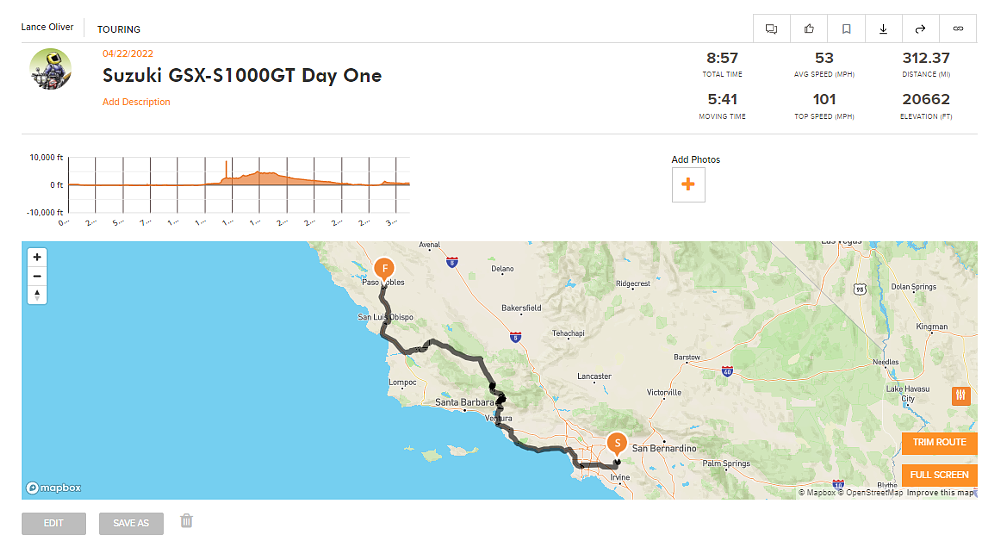
And here's the other revelation. If you read Jen's review of the GSX-S1000, which gets the same quickshifter that's on the GT, you may recall she noted that it worked so well she sometimes had to check the gear indicator on the display to be sure she actually shifted gears. Fellow riders on the GT ride said the same exact thing. Now I will admit, I don't have a wide range of experience with quickshifters (my esteemed West Coast colleagues usually test the high-zoot stuff). But this is the best quickshifter I've used yet, and yes, I'm also surprised to say that. It works up or down, in any gear, with the throttle open or closed. On top of that, the slipper clutch on the GT was redesigned so it only needs three springs, instead of five, so clutch pull is unexpectedly light. All that adds up to say I had no excuse whatsoever for not downshifting for those passing maneuvers because Suzuki could not have made it easier for me.
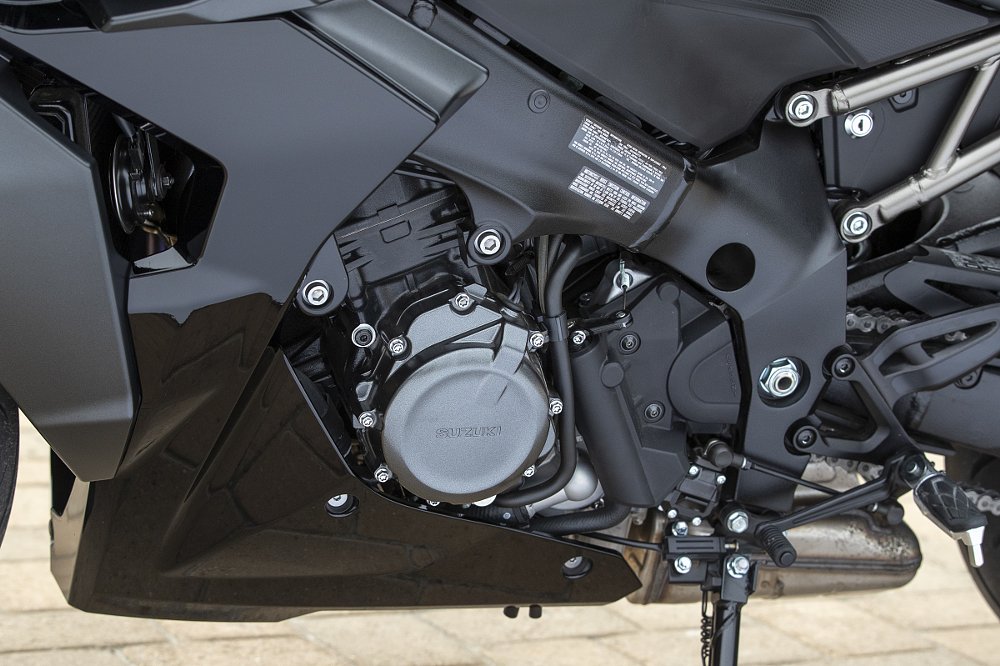
When we reached the tighter curves, I found the Brembo brakes worked as well as I expected, with plenty of power and no grabbiness. The rear brake was not as strong as I expected, but it's nothing I'd complain about.
When Jen rode the naked version, she noted that the suspension felt stiff, which was fine on perfectly smooth curves but allowed the bike to get unsettled over bumps at higher speeds. She speculated her light weight may have contributed to that, but I outweigh her by 50 pounds and I had the same sensation. If I had the GSX-S1000GT for a longer time, or if I owned one, I'd get some help from someone who's smarter than me about suspension setup to see if I could dial out some of that unsettling feeling — which, to be fair, was only on bumpy pavement at higher speeds.
Aside from that, however, the handling was a joy. The GT feels lighter than its weight. I never felt like I was wrestling a heavy touring bike, even in the tightest hairpins.
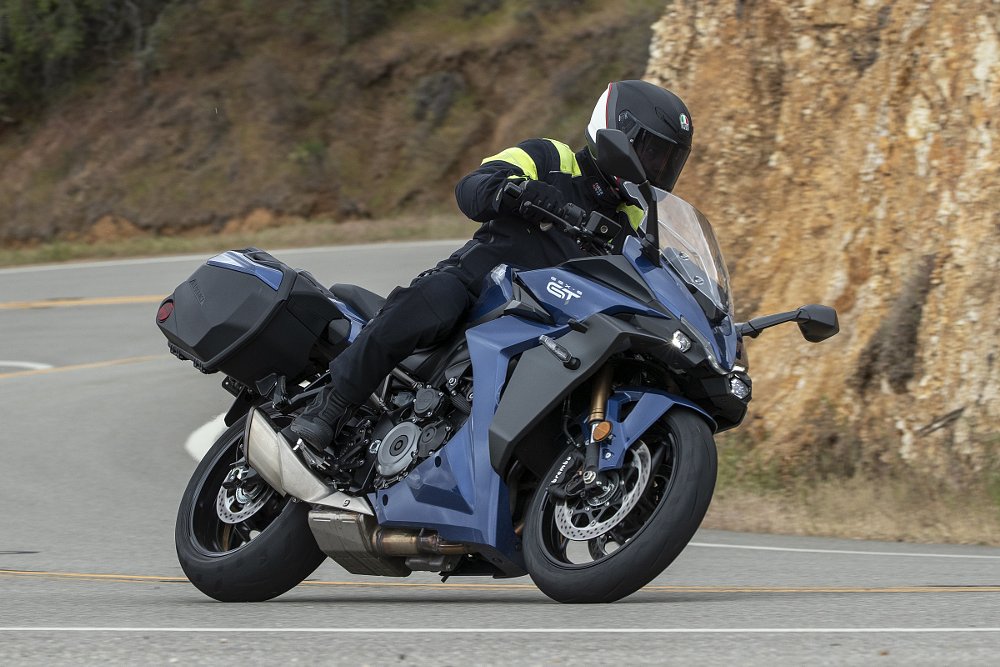
By the way, the GT rolls on Dunlop Roadsport 2 tires that have a slightly different carcass construction made especially for this model. Given the common 17-inch sizes, you'll have a wide range of options to choose from when you do need new tires.
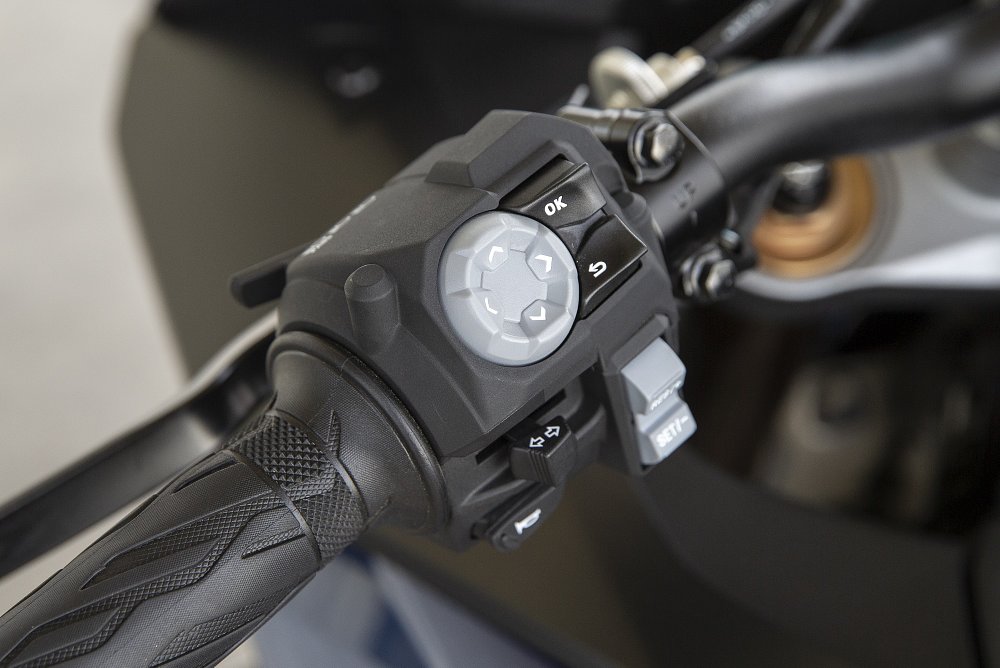
As mentioned above, Suzuki takes a different approach from its competitors — and even some of its own models, such as the Hayabusa — with the electronic rider aids on the GSX-S1000GT. There are three ride mode settings (called Suzuki Drive Mode Selector, or SDMS, in Suzuki-speak) labeled A, B, and C (Active, Basic, Comfort). Then there are five levels of traction control. Those two settings are totally independent, unlike many motorcycles, where changing the ride mode will alter multiple parameters, such as throttle response, maximum power, traction control levels, and ABS sensitivity. With the GT, the SDMS settings change only the throttle response, with A giving you the biggest hit at low engine speeds and C giving you the softest response. But all three give you the same maximum power.
The end result of this is that you don't have to spend any time creating a custom ride mode combination of throttle response and traction control. Since the power is the same, choosing A, B, or C is purely a matter of personal preference, and the difference is mostly noticeable when taking off from a stop. I didn't find any advantage to A, because it just makes it a little harder to be smooth, and I spent most of my time in B. But I could see someone preferring C, not just for low-traction situations, but just for the more relaxed feel. Since all three give you the same power and you can set traction control independently, there's no downside to choosing the throttle response you prefer.
In all cases, the new throttle bodies made for the GT and the ride-by-wire throttle provide good response without jerkiness.
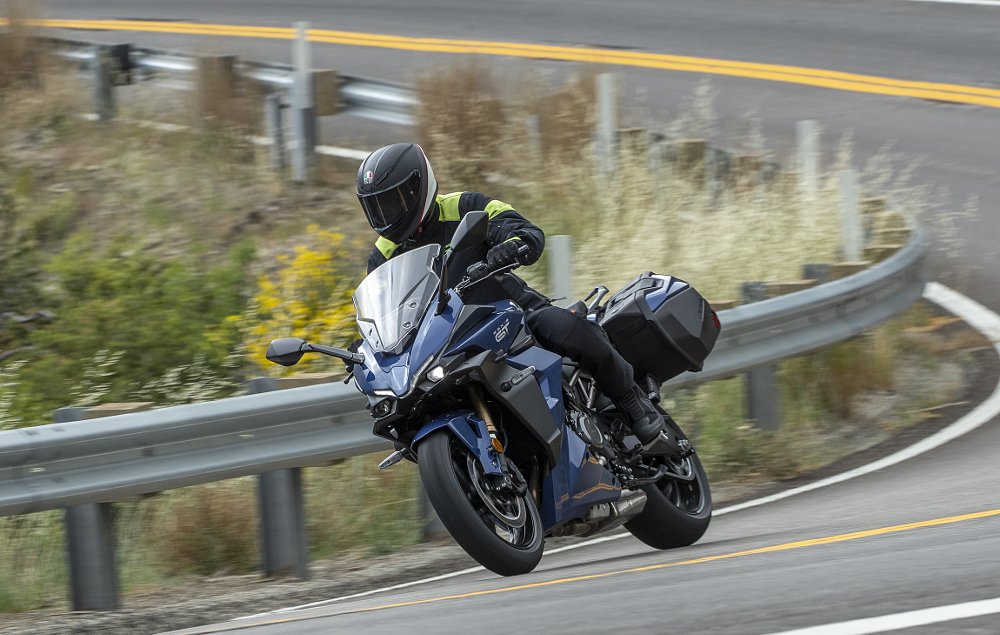
Along with comfort and luggage, a necessary ingredient for most sport-tourer shoppers is wind protection. The last 30 miles of our first day of riding, in a cold and steady rain, gave me a good opportunity to consider this. Fairly steeply raked, to match the sharp nose of the fairing, the windscreen created a calm bubble up to my chin and the air flow across my helmet was smooth, with no buffeting. (I'm five feet, 11 inches tall.) That's just the way I like it. For those who prefer more coverage, Suzuki offers an accessory screen that's 2.75 inches taller and more vertical.
Leg room is more likely to be a comfort complaint for some riders. It was fine for me, but I know from experience that footpegs that feel comfortable in a sporty context for me are often considered too cramped by many other riders. The photo below should give you an idea of how the Suzuki fits.
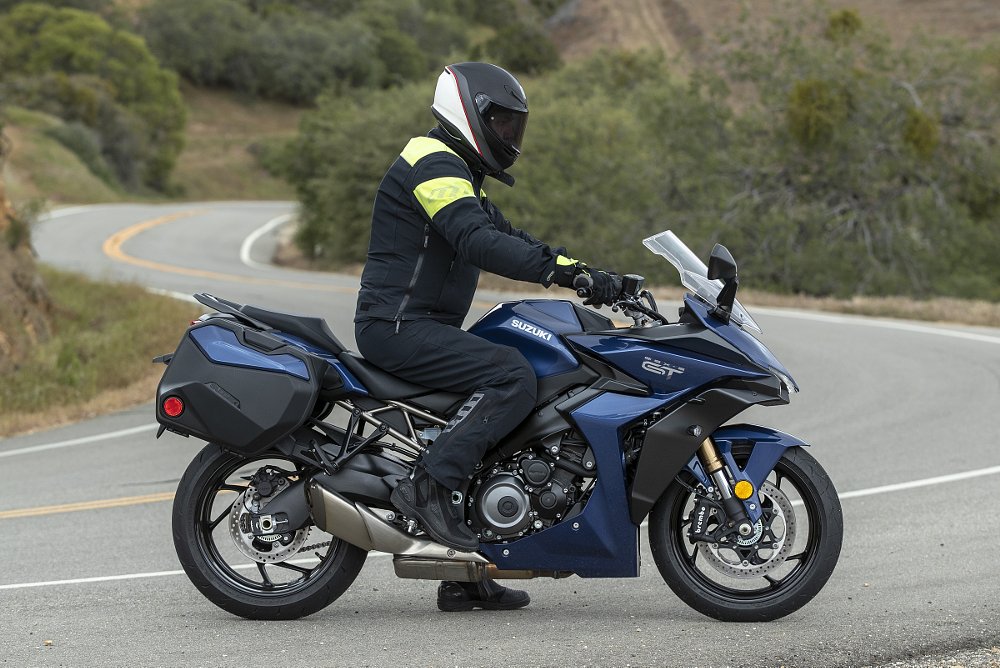
One final sport-touring comfort item that really matters to some riders. When we had some straight, open roads, I tested the cruise control. Turn it on with a single button on the right control pod and then use the single toggle switch on the left to set speed, resume, or raise or lower the speed. The cruise control was easy to use and performed without glitches, which hasn't always been the case in my experience with other motorcycles.
So what's not to like?
The obvious and most direct competitor to the GSX-S1000GT is the Kawasaki Ninja 1000SX, which also pairs wind protection, cruise control and color-matched luggage with liter-class power derived from the company's sport bikes. So far, you haven't heard me say a negative word about the Suzuki, but comparing it to the Ninja reveals some differences that will help some riders decide whether the Suzuki is right for them. The Ninja starts out cheaper but its luggage is more expensive, so the Ninja 1000SX and the GSX-S1000GT+ are within a couple hundred dollars once fully equipped. Subjectively, I'd say the Kawasaki luggage may feel a bit sturdier, but the size and shape of the Suzuki cases make it easier to fit a helmet inside and they are considerably less expensive. We rode through plenty of rain and no water got inside.
The differences between these two sport-tourers are small but will matter to some riders. The Ninja includes an inertial measurement unit that factors lean angle into the traction control and ABS. The Suzuki's system is more basic. The Kawasaki includes an adjustable windscreen and heated grips. The Suzuki's windscreen is fixed and heated grips are an option.
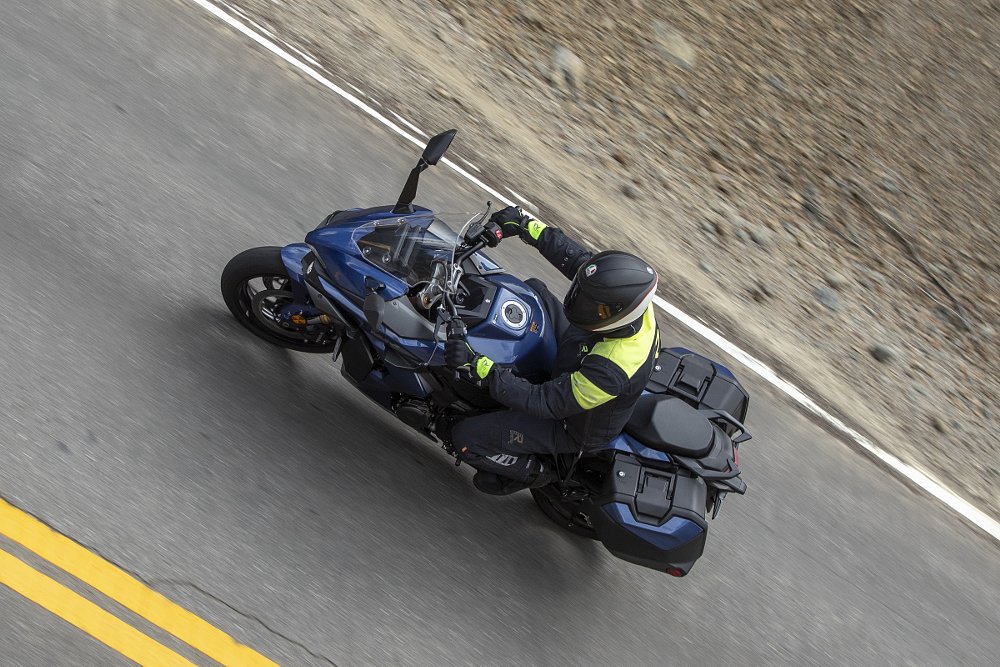
So if you're like me (hmm, maybe Spurgeon was right to send me on this one), and you happen to like the idea of a sub-$15,000 traditional sport-touring motorcycle that isn't some gangly, tall, pseudo-ADV bike (the crossovers of the motorcycle world), your choice may come down to which features you really want and which ones you can do without. If you must have an IMU or semi-active electronic suspension, you'll have to shop for other sport-touring models, most of them more expensive. If the Suzuki isn't lacking must-have features on your list, you should definitely give it consideration.
It's true, I do like this segment of motorcycles. If you're a street-only rider and like to hit the road occasionally and want one motorcycle that can do it all, a traditional sport-tourer is among the most competent and versatile options out there. And the Suzuki GSX-S1000GT is a strong contender in that class, right out of the gate.
| 2022 Suzuki GSX-S1000GT+ | |
|---|---|
| Price (MSRP) | $13,799 ($13,149 for GT without side cases) |
| Engine | 999 cc, liquid-cooled, 16-valve, four cylinders |
|
Transmission, final drive |
Six-speed, chain |
| Claimed horsepower | 149.92 @ 11,000 rpm |
| Claimed torque | 78.18 foot-pounds @ 9,250 |
| Frame | Twin-spar aluminum |
| Front suspension | KYB 43 mm inverted fork, adjustable for preload, compression and rebound damping; 4.7 inches of travel |
| Rear suspension | KYB shock, adjustable for preload and rebound damping |
| Front brake | Dual Brembo four-piston calipers, 310 mm discs, ABS |
| Rear brake | Single-piston Nissin caliper, 240 mm disc, ABS |
| Rake, trail | 25 degrees, 3.9 inches |
| Wheelbase | 57.5 inches |
| Seat height | 31.9 inches |
| Fuel capacity | 5.0 gallons |
| Tires | Dunlop Roadsport 2 120/70R17 front, 190/50R17 rear |
| Claimed weight | 498 pounds (without side cases) |
| Warranty | 12 months |
| More info | suzukicycles.com |




